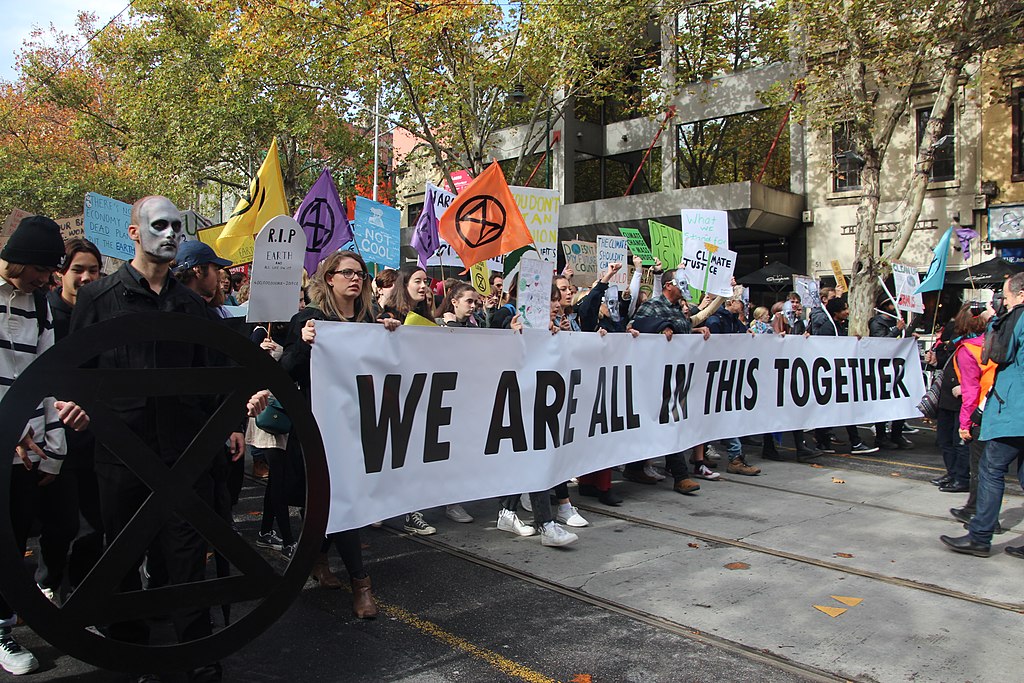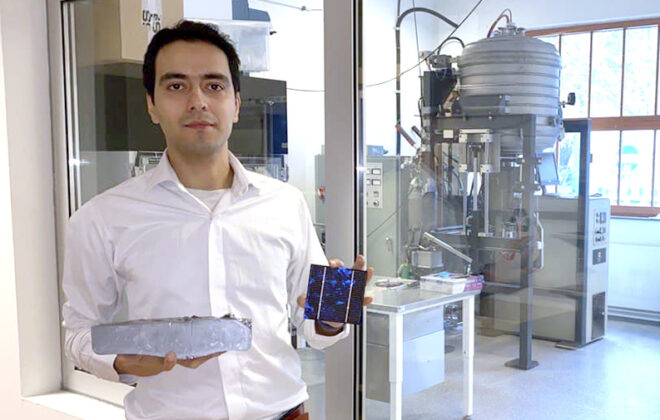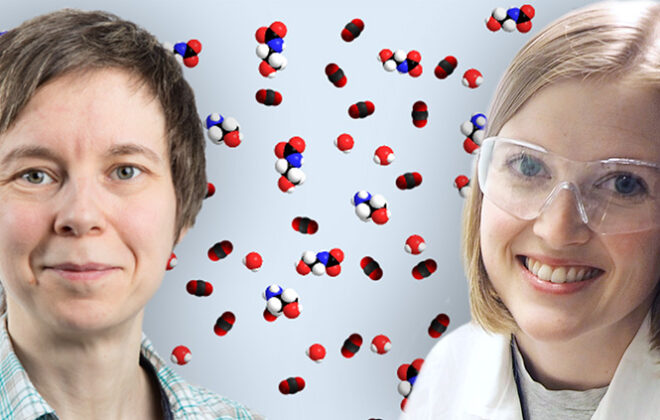To deal with the climate crisis we need to break our social bubbles
 Solidarity rally for global climatestrike. Photo: Takver
Solidarity rally for global climatestrike. Photo: Takver
To deal with urgent global challenges, such as climate change, we need to communicate outside our usual social groups.
Common-pool resources
A common-pool resource is a resource that can be freely accessed, and that can be depleted when overexploited. Think for example of a local population of fish. Each individual who has access to the resource benefits from taking as much as they like, but once the resource is depleted, all suffer direct material consequences. If the pool is small, individuals can quickly see that their own behaviour is affecting the resource. But what happens when a common-pool resource is a large global resource like the atmosphere? Then there are so many people using, and each individual person’s impact is so small compared to the collective impact of everyone that the feedback mechanism doesn’t work in the same way. By the time society as a whole realises that the resource is limited, it may already be almost too late to do something about it and avoid disaster.
Changing behaviour
In our paper “Dynamics of collective action to conserve a large common-pool resource“, recently published in Scientific Reports, we studied the speed at which behaviour change spreads through a social network. We modelled individual people as «agents», who change their behaviour based on their interactions with those around them in a network. We wanted to understand what kind of dynamics control the speed at which society changes, and what we can do to increase it.
Social clusters
Our simulations showed that there are two distinct stages in the evolution. At first, agents convince their neighbours, and quickly form clusters of socially linked agents who agree with each other. In the second stage the change in behaviour slows down. The clusters agree internally, so there are few agents who are actually in contact with anyone who has a very different opinion. A meaningful change in an agent’s behaviour happens much more rarely, only when they become convinced through an interaction with someone outside their cluster. There is a slow tug-of-war happening on the boundaries between clusters.
How to speed it up
To speed up the social change, these clusters need to be dissolved. We investigated different strategies for increasing the speed at which clusters dissolve and consensus is reached. High connectivity between agents, for instance, can help to put more people of different opinions in touch. In order to spread information and improve behaviour for the greater good, we need to step up meaningful interaction between people with different ideas. External pressure can also help make the agents more persuasive, for instance through government subsidies or legislation, and clear messaging from authoritative sources.
Social media bubbles and echo chambers
Our work highlights the dangers of social media algorithms that tend to lead to social media bubbles. These algorithms choose which information to present to us, and typically are designed to elicit a strong emotional response, positive or negative, that will make us feel part of a group. That leads to strong social divisions and echo chambers, where the same opinions and ideas are repeated over and over again and amplified, strengthening the clusters, the dissolution of which is so important according to our modelling results. This is particularly vital now that the pandemic has forced us retreat from real-world interactions where we might meet people outside of our social media bubbles. Nevertheless, social media can also be a powerful tool for change, if it can be redesigned to break the bubbles, by helping people to find common ground and to meaningfully and constructively interact with others outside their usual network.

Astrid de Wijn
Astri de Wijn is a professor at the Department of Mechanical and Industrial Engineering at NTNU.
Tags In
Search
Søk
Categories
- Arctic Research
- Arkitektur
- Bærekraft
- Bioingeniørfag
- Biologi
- Biology
- Biomedical Laboratory Science
- Biotechnology
- Bioteknologi
- Chemical Engineering
- Chemistry
- Climate
- Computer Science
- Datateknologi
- Digital
- Elektronikk
- Energi
- Energi
- Energy
- Engineering
- Engineering
- Environment
- Food Science
- Forskning
- Fysikk
- Fysikk
- Havbruk
- Informasjonsteknologi
- Informasjonsteknologi
- Ingeniørvitenskap
- Kjemi
- Kjemisk prosessteknologi
- Kjemisk prosessteknologi
- Kreftbehandling
- Kybernetikk
- Marine Technology
- Materialer
- Materials Science
- Materialteknologi
- Matvitenskap
- Meninger
- Miljø
- Min ph.d.
- My PhD
- My PhD
- My postdoc
- Nanotechnology
- Nanoteknologi
- Ocean
- Oil and gas
- Physics
- Research
- Simulering og visualisering
- Spør en forsker
- Studentliv
- Sustainability
- Ukategorisert
- Universitetsliv
- University Life
Kategorier
- Arctic Research
- Arkitektur
- Bærekraft
- Bioingeniørfag
- Biologi
- Biology
- Biomedical Laboratory Science
- Biotechnology
- Bioteknologi
- Chemical Engineering
- Chemistry
- Climate
- Computer Science
- Datateknologi
- Digital
- Elektronikk
- Energi
- Energi
- Energy
- Engineering
- Engineering
- Environment
- Food Science
- Forskning
- Fysikk
- Fysikk
- Havbruk
- Informasjonsteknologi
- Informasjonsteknologi
- Ingeniørvitenskap
- Kjemi
- Kjemisk prosessteknologi
- Kjemisk prosessteknologi
- Kreftbehandling
- Kybernetikk
- Marine Technology
- Materialer
- Materials Science
- Materialteknologi
- Matvitenskap
- Meninger
- Miljø
- Min ph.d.
- My PhD
- My PhD
- My postdoc
- Nanotechnology
- Nanoteknologi
- Ocean
- Oil and gas
- Physics
- Research
- Simulering og visualisering
- Spør en forsker
- Studentliv
- Sustainability
- Ukategorisert
- Universitetsliv
- University Life



